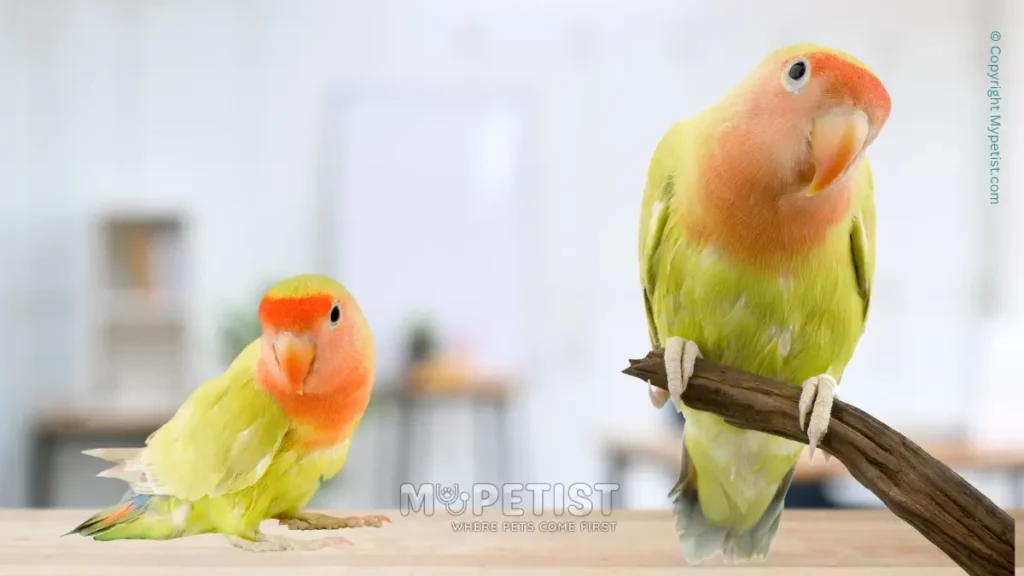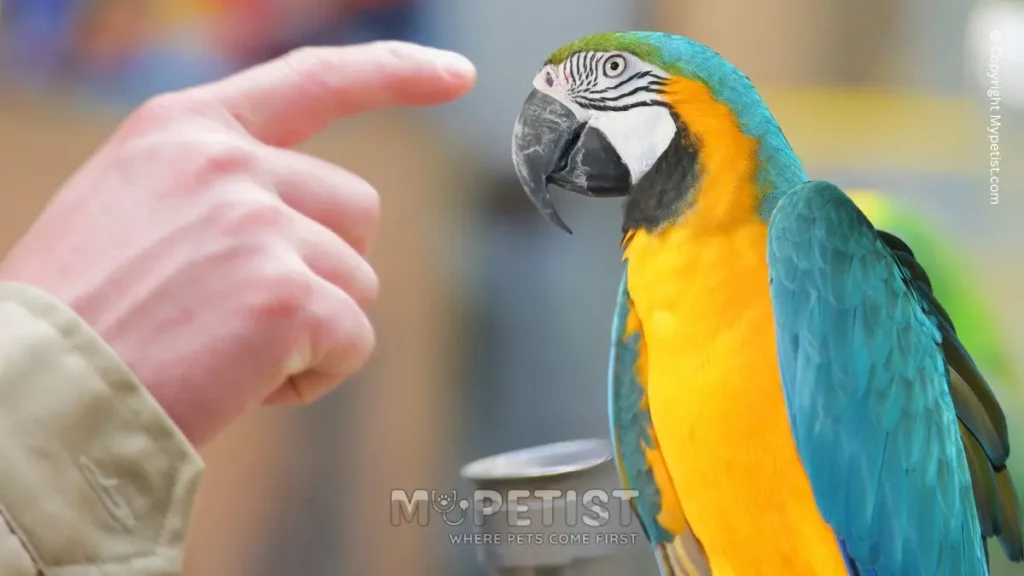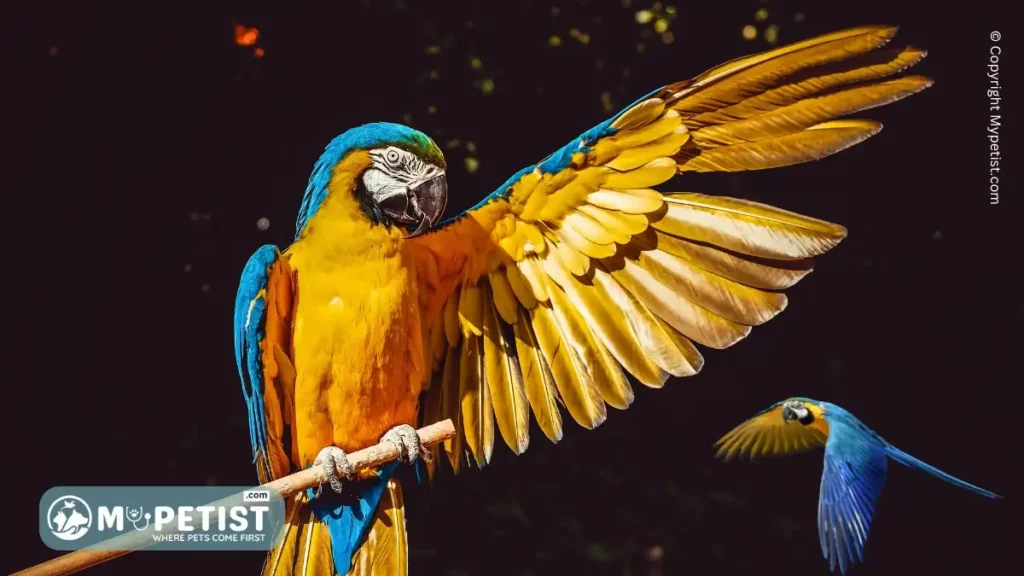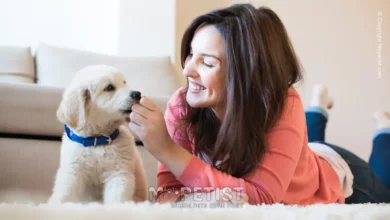Best Ways to Bond With Your Pet Bird
Feathered Friends Forever: Top Tips for Building Strong Bonds with Your Pet Bird!
Having a pet bird is a unique and rewarding experience. If you’re looking for new ways to bond with your pet bird, then you’ve come to the right place! This article will provide you with some tips and tricks to help strengthen the bond between you and your feathered friend. From spending quality time together to learning about each other’s personalities, these ideas can help you build an unbreakable connection with your pet bird.
Table of Contents
Benefits of bonding with your pet bird
Bonding with your pet bird can be an incredibly rewarding experience. Not only can it bring joy to both you and your pet, but it can also provide numerous physical and mental health benefits. From improved communication skills to increased feelings of companionship, there are many reasons why spending time with your feathered friend is beneficial for both of you.

This article will discuss the various ways that bonding with a pet bird can positively impact your life. You’ll learn how having a deeper connection with your bird can help you become more self-aware, reduce stress and anxiety, improve communication skills, and even boost your overall emotional well-being.
Best Ways to Bond With Your Pet Bird
Discover the best ways to bond with your pet bird! Learn how to create a special connection with your feathered friend by creating trust and understanding.
Bonding Through Playtime
A. Different types of playtime activities to do with your bird
Playing with your bird can be a great way to strengthen the bond between you and your feathered friend. There are a variety of different playtime activities you can do with your bird to keep them entertained and engaged. For example, you can set up a foraging station in their cage or an obstacle course made from toys, perches, and swings.
The Benefits of Owning a Cat: How They Improve Your Life
You can also hang toys from the ceiling of their cage or provide them with shreddable items to tear apart. You can even teach them some simple tricks like turning around or stepping up onto your hand when it is offered.
Finally, providing your bird with natural objects such as twigs and leaves will give them something to explore and chew on. With these different playtime activities, you can ensure that your bird is getting the mental stimulation they need while keeping them happily occupied during the day.
B. Ways to interact with your bird during playtime

Interacting with your pet bird during playtime is an important part of its well-being and can be a fun bonding experience for you both. There are many ways to provide enrichment and entertainment for your feathered friend. You can try giving it toys to explore and manipulate, like balls, bells, mirrors, ropes, or other safe items.
Alternatively, you can take them outside in a secure enclosure, so they can explore the natural world. If you have another pet bird, playing together can help keep them socially engaged. Another great way to interact with your bird is through training sessions.
This helps strengthen the bond between you and builds trust while teaching your bird new skills. Additionally, talking to your bird encourages verbal communication while providing mental stimulation. No matter how you choose to engage with your bird during playtime, make sure that it’s always a positive experience for both of you!
Bonding Through Training
A. Different types of training methods for birds
Training methods for birds vary depending on the species and breed of bird. However, several common methods are used across all types of birds such as clicker training, operant conditioning, and shaping. Clicker training involves using a clicker to reward desired behavior with a treat.
Operant conditioning is done by reinforcing good behavior with positive reinforcement and discouraging bad behavior with negative reinforcement. Shaping is another method that involves rewarding steps towards a desired behavior until the final result is achieved.
How to Choose the Right Pet for You: A Comprehensive Guide
Additionally, target training can be used to help teach a bird to fly to certain places and perch on a specific object when called. Finally, desensitization can help reduce fear and stress in birds by gradually introducing them to something new in small doses over time. No matter which method you choose, patience and consistency are key in successfully training your bird.
B. Benefits of training your bird
Training your bird can be a very rewarding experience as it helps to strengthen the bond between you and your feathered friend. Not only will it make it easier to handle your bird, but it can also help to improve their behavior, reduce stress and anxiety, and even aid in their overall health. Training your bird can also help them learn new behaviors, such as talking or playing with toys.
It can also reduce the risk of them developing unwanted habits, like biting or feather-plucking. Training your bird can also provide mental stimulation for them and keep them from becoming bored. Additionally, if you take the time to train your bird properly, you’ll be able to understand their behavior better and provide much needed attention that they need in order to stay happy and healthy.
C. Tips for successful training sessions
Training your pet bird can be a challenging, but rewarding task. To make the process smoother and more successful, there are a few tips to keep in mind. First, you should always keep sessions short and positive. Reward your bird with treats or praise for good behavior and ignore bad behavior.
Secondly, use simple commands like “come here” or “sit” that your bird can easily understand. Also, make sure to use consistent language with the same phraseology each time you train them to ensure they learn quickly. Lastly, it’s important to be patient and not get frustrated when things don’t go as planned; with patience and consistency, you will ultimately succeed in training your pet bird!
Bonding Through Communication
A. How to understand the language of birds and their behavior

Understanding the language of birds and their behavior can be a tricky business! However, with some patience and observation, it is possible to learn how they communicate. A good starting point is to pay attention to their calls – different bird species have different songs and use them for various purposes, such as communicating danger or attracting mates.
It is also beneficial to take note of the body language of birds, including how they fly, how they move around in flocks, and even how they interact with other birds. Birding guides can be helpful in identifying species and learning more about their behaviors. Finally, spending time in nature will help you become more familiar with the habits and calls of local bird populations. With practice, you’ll soon find yourself understanding the language of birds!
B. Ways to talk and communicate with your bird
Talking and communicating with your bird can be a fun and rewarding experience. It is important to remember that birds learn differently than humans do, so patience and consistency are key. Start by teaching your bird simple words and phrases, such as its name or favorite treats.
Repeat the words or phrases frequently in a calm and soothing voice. When your bird begins to repeat the words back to you, reward it with praise or a treat. To expand on communication, you can use gestures and body language to get your point across. For example, if you want your bird to step up onto your finger, hold out your index finger near its chest and then bring it closer until it steps up.
You can also teach more complex behaviors through positive reinforcement methods such as clicker training. By being patient and utilizing different methods of communication, you will eventually be able to effectively communicate with your bird.
C. Tips for teaching your bird new words and commands
Teaching a bird new words and commands is a rewarding process, but it can be challenging. One useful tip is to pick a few words or commands that you want to teach your bird, and focus on those. You should also make sure you’re consistent when teaching your bird; use the same word or phrase every time. Additionally, it’s important to keep the lessons short; birds tend to become bored quickly so you want to keep them engaged and interested.
It’s also good practice to reward your bird with treats when they do something correctly; this will help reinforce the behavior and further encourage them to learn. Finally, be patient! Teaching a bird takes time and repetition, so don’t get discouraged if progress isn’t immediate. With patience, consistency and positive reinforcement, your bird will soon be an expert at following commands and speaking words!
D. Understanding the body language of birds
Understanding the body language of birds can be a fascinating and rewarding experience. By observing their physical posture and movements, we can gain insight into their behavior and moods. By watching their actions, we learn to recognize when they’re feeling threatened or fearful, happy or excited, curious or content.
We also learn to understand how they communicate with each other – by tail-wagging and head-bobbing, puffing out their feathers or changing the color of their plumage – as well as how they interact in social groups and with potential mates. In addition, by understanding the body language of birds, we can better appreciate them in our natural environment and enjoy watching them in our backyards.
E. How to recognize when a bird is feeling stressed or scared
When a bird is feeling stressed or scared, there are a few signs to look out for. Generally speaking, the bird will appear agitated, with rapid movements and increased vocalizations such as chirping and squawking. The bird’s feathers may also be fluffed up, which can be an indication that it is feeling threatened or uncomfortable in its current environment.
Other physical signs of stress include panting, changes in body posture such as crouching down low, and even regurgitation. In addition to these physical signs, birds may also become more aggressive than usual when they feel scared or threatened. To recognize these behaviors, observe your feathered friend’s behavior carefully on a regular basis so that you can quickly identify any changes in their demeanor.
Conclusion
Bonding with your pet bird is an incredibly rewarding experience that can be achieved in a variety of ways. From providing plenty of play time to sharing food and keeping them safe, there are many different opportunities to make meaningful connections with your feathered friend. Take the time to learn their unique behaviors, preferences, and signals so you can develop a strong bond with them. Finally, don’t forget to show your appreciation for their companionship by giving them lots of love and affection!




